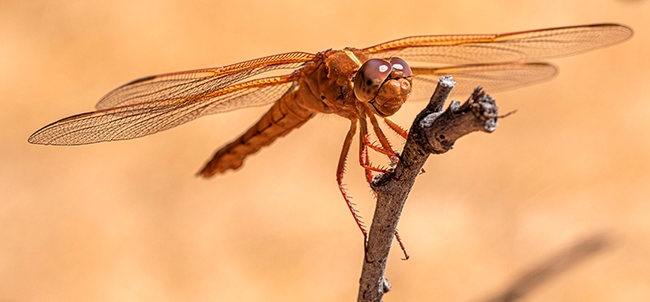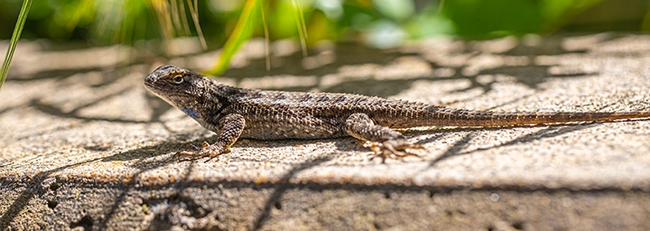- Author: Kathy Keatley Garvey
Ever seen an angler tie a fly?
You will if you visit Briggs Hall during the 110th annual UC Davis Picnic Day on Saturday, April 20.
"The Art of Fly Tying" by the Fly Fishers of Davis is an integral part of the insect events and activities at Briggs Hall, home of the UC Davis Department of Entomology and Nematology.
The anglers are eager to show you how to tie a fly and then gift it to you.
At the 2022 UC Davis Picnic Day, we remember veteran fly fisherman Paul Berliner asking a six-year-old girl if she'd like a fly tied for her.
She wasn't sure at first, but when she saw the neon pink feather, she was hooked. She loves pink.
The Fishers of Davis is a "non-profit organization with 100+ members from communities in the central Sacramento valley," the website indicates. "Our charter is to promote the art of fly-fishing and to protect our natural resources and fisheries through community education and conservation. FFD is an affiliate of the Federation of Fly Fishers (FFF), an international non-profit organization and its Northern California Council (NCCFFF). Our meetings and membership are open to the public, and we provide equal opportunity membership without any discrimination."
During the COVID pandemic and the cancellation of UC Davis Picnic Day, many organizations went virtual with presentations. The Fly Fishers created a video (click here), narrated by Berliner that won a second-place award in the UC Davis Picnic Day's Blue and Gold category, spotlighting health, recreation and athletics. Also check out Berliner's videos on YouTube)
The Fly Fisher meetings, open to the public, are held the last Tuesday of each month, with a social at 7 and the general meeting at 7:30. (See website for details). All members receive the club's monthly newsletter, “The Fisherman's Line.” See the Newsletters for the current edition and back editions. Yearly dues for adults and families are $30 per year. Yearly dues for students are $15 per year.
Typical meetings include the following:
- An introduction of new members, and reports on who has been fishing.
- A guest speaker who narrates a presentation covering some aspect of fly-fishing or conservation.
- An available library of books and videos for members to sign out.
- Updates on where to fish, club activities, outings, and conservation projects.
Outings take them to such fly-fishing sites as Pyramid Lake, Lake Berryessa, McCloud River, Lake Davis and Trinity River and more.
"Do our members ever get skunked on a fishing trip?" is one of the questions posted on the website. The answer: "Never! (Though, as highly trained professionals, we never admit it.)"
For other insect-related activities at Briggs Hall during the UC Davis Picnic Day, click here.
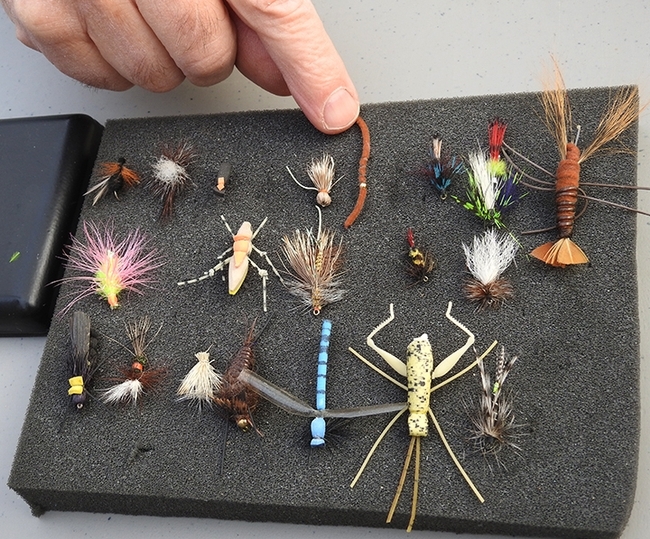
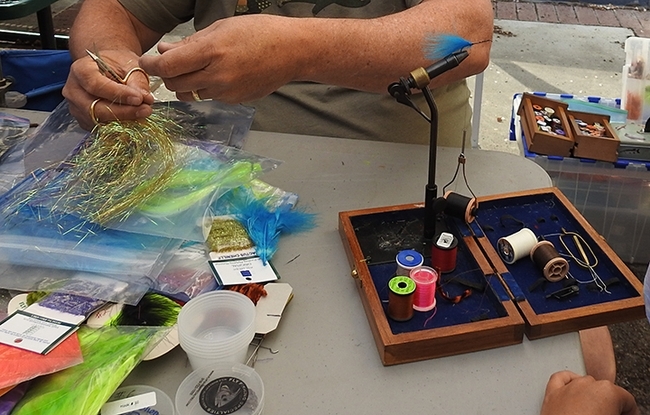
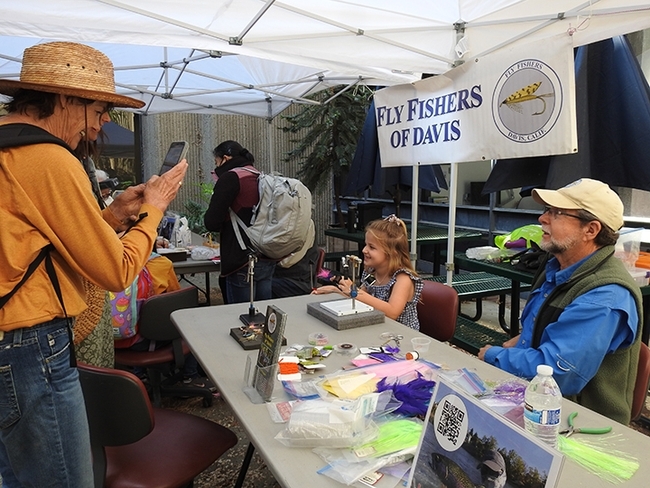
- Author: Kathy Keatley Garvey
When the UC Davis Department of Entomology and Nematology hosts its "bug activities" at Briggs Hall during the 110th annual UC Davis Picnic Day on Saturday, April 20, one of the most popular is maggot art.
Children and adults alike create maggot art by using plastic forceps to dip a live maggot into water-based, non-toxic paint. They then watch it--or guide it--to make the drawing they're seeking.
The result: It's suitable for framing (or at least a spot on the refrigerator door).
Rebecca O'Flaherty, a former graduate student of UC Davis forensic entomologist Robert "Bob" Kimsey, coined the educational teaching curriculum, "Maggot Art," back in 2001 when she was studying at the University of Hawaii and rearing blowflies for her forensic research.
Then, asked to create an activity to draw the interest of elementary school students, she came up with "Maggot Art." She also wanted a way to generate interest and respect for forensic entomology,
It quickly drew national interest. The CSI television show featured one of her works, “Ancient Offering,” which hung on the permanent set in Gil Grissom's office. O'Flaherty also exhibited her work at art shows, including a two-month exhibition at the Capital Athletic Club, Sacramento, in 2007.
Today, maggot art activities occur sporadically throughout the country. The Entomological Society of America acknowledged O'Flaherty here. "The basic premise is dipping prepuparial blow fly larvae (Diptera: Calliphoridae) into non-toxic ink and then placing them on a piece of paper or file card and letting them crawl around to create an abstract picture. Different larvae are used in different colours to create the picture. Rebecca O'Flaherty first demonstrated this at a North American Forensic Entomology Association Meeting many years ago, and it is a popular activity and many youtubes can be viewed to see how it works."
Sometimes the young artists get quite attached to a maggot and ask an event coordinator or parent if they can take it home. (Nobody ever gets a "yes!")
(For a complete list of bug activities at Briggs Hall, see the UC Davis Entomology and Nematology website. This year the Bohart Museum of Entomology display and live petting zoo also will be at Briggs. The Bohart headquarters in the Academic Surge Building will be closed on Picnic Day)

- Author: Kathy Keatley Garvey
Remember when San Francisco 49'ers wide receiver Brandon Aiyuk credited his spectacular 51-yard catch in the 2024 NFC championship game with the Detroit Lions to a ladybug (note that entomologists correctly call it a "lady beetle") landing on his shoe before the game?
Well, those attending the 110th annual UC Davis Picnic Day activities on Saturday, April 20 at Briggs Hall--home of the UC Davis Department of Entomology and Nematology--can also net some luck.
Children are encouraged to take home a couple of the beetles at the UC Statewide Integrated Pest Management Program (UC IPM) booth in the courtyard of Briggs. (Adults can do so, too. Maybe they'll name their beetles "Brandon" and "Aiyuk.")
The ladybug is actually a beetle (Coleoptera), not a bug (Hemiptera). It's associated with good luck because it eats the aphids that try to destroy our crops. It can eat as many as 5000 aphids in its lifetime, scientists estimate.
"These beetles have become a cultural icon of sorts because of their appearance and their beneficial habits," writes UC Davis distinguished professor Lynn Kimsey, former director of the Bohart Museum of Entomology, in her insect fact sheet on lady beetles. "Both adults and larvae feed on aphids and other small, soft-bodied insects...They are ferocious predators on small insects." (See what the UC Statewide Integrated Pest Management Program says about lady beetles.)
Ever seen a close-up shot of a lady beetle eating an aphid? The predator and the prey...
Ever seen a cellar spider snaring and eating a lady beetle? The predator and the predator...one becomes prey.
Ordinarily, the lady beetle's bright red coloration serves as a "warning" to predators. Plus, lady beetles are known to ooze a foul-tasting chemical that tastes so bad that predators leave them alone. This lady beetle engaged in "reflex bleeding," exuding an alkaloid toxin (which did not deter the predator).
Lady beetles will be just a few of the bugs at Briggs Hall during UC Davis Picnic Day. You'll also see cockroach races, maggot art, and displays featuring ants, bees, walking sticks, mosquitoes, nematodes, butterflies, spiders, whip scorpions, and more. Check out "bug" activities at Briggs Hall here. UC Davis Picnic Day is free and family friendly.
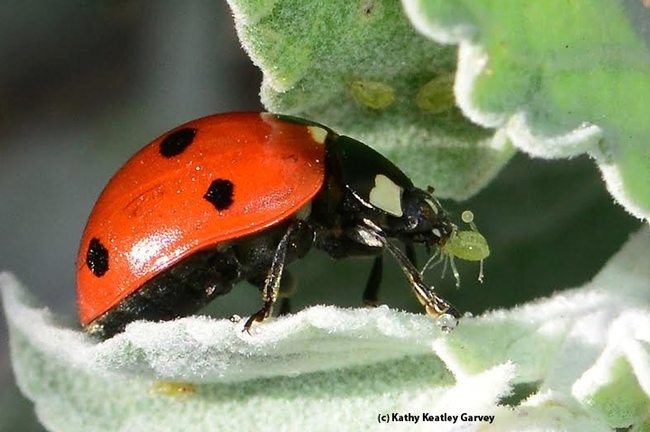
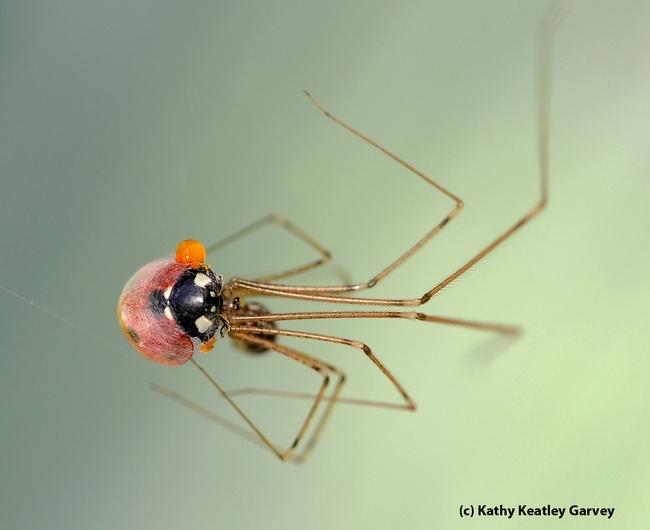
- Author: Kathy Keatley Garvey
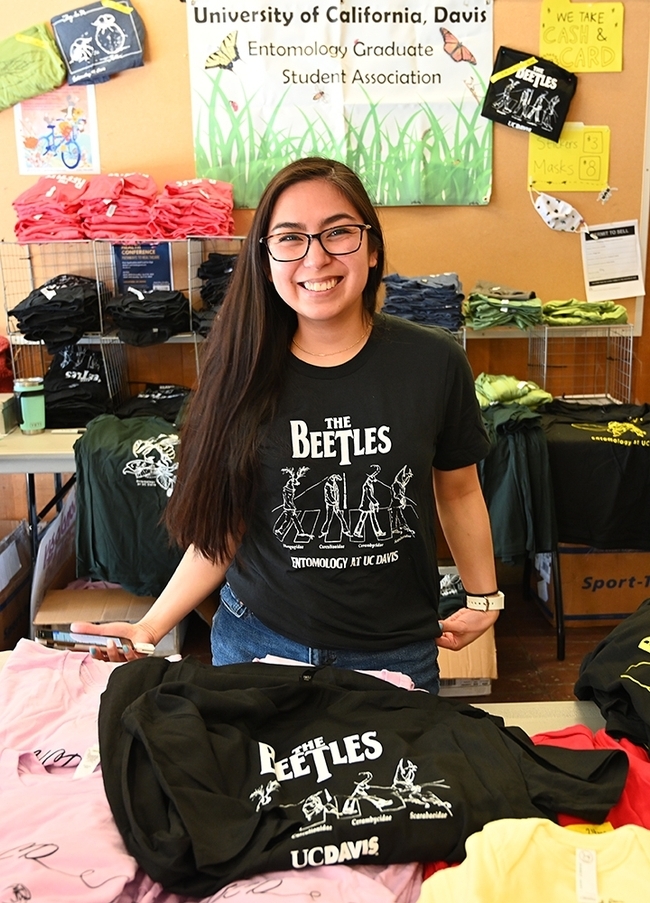
Well, it wouldn't be a picnic at all!
The UC Davis Department of Entomology and Nematology (ENT) is planning scores of displays and activities at Briggs Hall for the 110th annual campuswide UC Davis Picnic Day, to take place Saturday, April 20.
Think ants, bees, beetles, butterflies, flies, cockroaches, maggots, mosquitoes, nematodes, spiders and scorpions.
And more.
This year, all of the entomology exhibits, including those at the Bohart Museum of Entomology, will be at Briggs Hall. (The Bohart Museum headquarters in the Academic Surge Building will be closed on Picnic Day.)
Hours? From 9 a.m. to 5 p.m. The Bohart Museum's pop-up tent in front of Briggs, featuring insect specimens and an insect petting zoo, will be open from noon to 4 p.m.
The entomology displays traditionally draw some 3000 attendees, said the ENT co-chairs, doctoral student Grace Horne of the Emily Meineke lab, and faculty member and forensic entomologist Robert "Bob" Kimsey. It's all free and family friendly.
Among the crowd pleasers are the cockroach races, maggot art, stick insects, and the Bug Doctor booth. The doctor is always in!
New to the line-up is the “I IUV Bugs," an exhibit about plant-insect interactions under ultraviolet light. The "glowing bugs exhibit" is the brainchild of Horne and primarily designed by the Meineke lab, "especially (doctoral student) Marielle Hansel Friedman," Horne said. "We will have plants from the UC Davis Arboretum Teaching Nursery and local/pet-trade arthropods which glow under ultraviolet light. With this exhibit, we seek to highlight the interplay between light, color, and species interactions."
Doctoral student Veronica Casey of the Shahid Siddique lab designed the new nematode exhibit. Carla-Cristina "CC" Melo Edwards of the Geoffrey Attardo lab is coordinating the new medical entomology display. "The bumble bee observation hive is unfortunately not ready for the spotlight this year," Horne said.
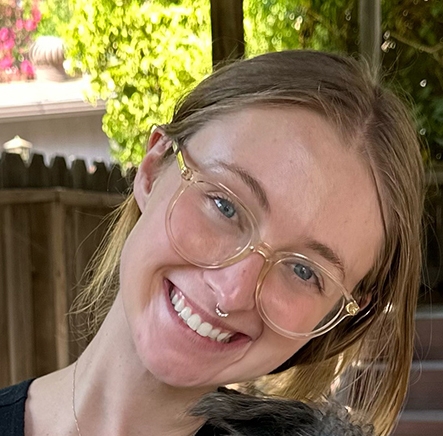
Bug Doctor
Briggs Hall Entryway
Graduate students will answer questions about insects. What's that bug? Attendees are encouraged to bring an insect or photo for identification.
Cockroach Races
Front of Briggs Hall
American cockroaches, Periplaneta americana, from Bob Kimsey's forensic lab, race on a specially made track, while roach fans cheer for their favorites. (Sometimes the athletes are named for faculty, friends or bystanders.)
Medical Entomology
122 Briggs Hall
Carla-Cristina "CC" Melo Edwards of the Geoffrey Attardo lab is coordinating the medical entomology display. Her research focuses on investigating the physiological mechanisms underlying pyrethroid resistance in Aedes aegypti (the yellow fever mosquito).
Diversity of Arachnids
122 Briggs Hall
Doctoral student Emma Jochim of the Jason Bond lab is coordinating an exhibit she created last year to display the diversity of arachnids, such as vinegaroons, whip spiders, tarantulas, and scorpions. "We'll have live animals and fact sheets that will give a general overview of their diversity, behavior, and habitat," Jochim said. "I'll also bring some curated specimens to show what goes into creating a scientific collection and talk about why collections are important for understanding biodiversity. "
Maggot Art
Briggs Courtyard
Artists--children and adults alike--create maggot art by dipping a live maggot into water-based, non-toxic paint. It's suitable for framing (or at least a spot on the refrigerator door). This event will close at 3 p.m. this year (last year it was at 5 p.m.)
Dr. Death
122 Briggs Hall
Forensic entomologist Robert Kimsey will display and discuss his work in his "Dr. Death" booth. Last year Kimsey pin-mounted and identified flies from various cases and research efforts, and displayed studies on the sequence of development of individual maggots, calling attention to the development and sequence of communities of insect maggots. "By these means, approximations about how long a person has been dead can be made," he told the crowd.
Entomology at UC Davis
122 Briggs Hall
Displays of insects, including bees, ants and more. Graduate students, faculty and emeriti will staff the tables.
Bohart Museum of Entomology
Front of Briggs Hall
A pop-up tent, staffed by the Bohart Museum, will include stick insects (walking sticks) and Madagascar hissing cockroaches. "We are excited to be part of the bigger department's offerings," said Tabatha Yang, education and outreach coordinator. Give-aways are also planned.
Fly-Tying
Briggs Hall courtyard
Fly Fishers of Davis will show attendees how to tie a fly. The recipients take home the flies.
Insect-Themed T-Shirt Sales
Briggs Hall entryway
Members of the Entomology Graduate Student Association (EGSA), led by president Mia Lippey, will be selling their popular insect-themed t-shirts, including The Beetles. The T-shirt, EGSA's all-time best seller, is a take-off of the cover of The Beetles' Abbey Road alum. However, instead of the Beatles crossing the road in a single file, four beetles (family names Phengogidae, Curculionidae, Cerambycidae and Scarabaeidae) do so.
Mosquito Control Booth
Entrance to Briggs (below front steps)
Sacramento-Yolo Mosquito and Vector Control District will be providing information on mosquitoes, answering questions, and handing out give-a-ways, including mosquito repellent.
UC Statewide Integrated Pest Management (UC IPM)
Briggs Hall Courtyard
“We plan to have many of our usual materials on display and will be giving out the live lady beetles (aka ladybugs) again,” said urban and community IPM educator Lauren Fordyce. “We purchase them from a local garden center. In addition to that, we plan to have a prize wheel that adults and kids can spin, answer a question, and win a prize if they answer correctly. We may also have temporary insect tattoos to give away.”
Ranked Third in the Country. The UC Davis Department of Entomology and Nematology is ranked third among “The Best Entomology Colleges in the United States for 2024" by universities.com. The department includes 24 active and 19 retired faculty; 28 graduate students (five in the master's degree program and 23 in the doctoral degree program); 47 undergraduate entomology majors (based on the Office of Academic Support and Instructional Services (OASIS) Student Reports); and a staff comprised of 27 academics (non-faculty), 24 career, and 56 student assistants. Professor and chair of the department is molecular geneticist and physiologist Joanna Chiu.
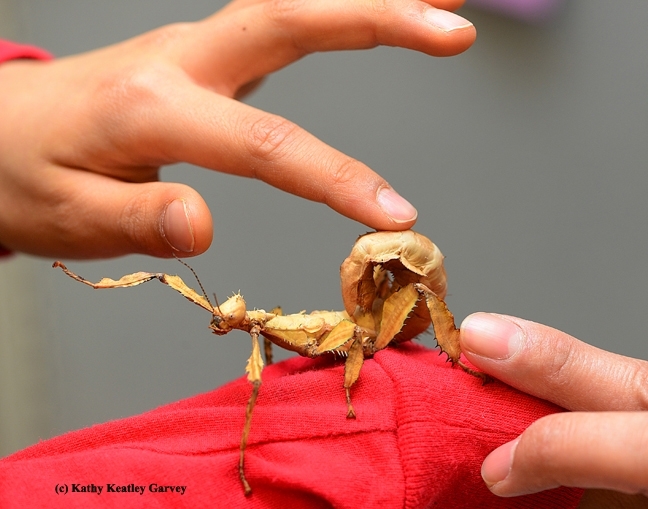
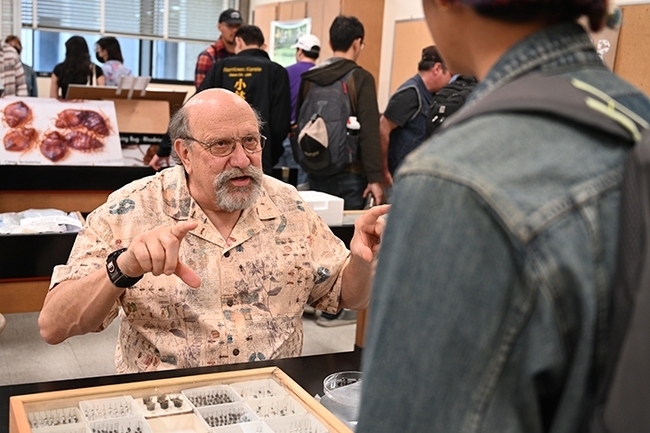
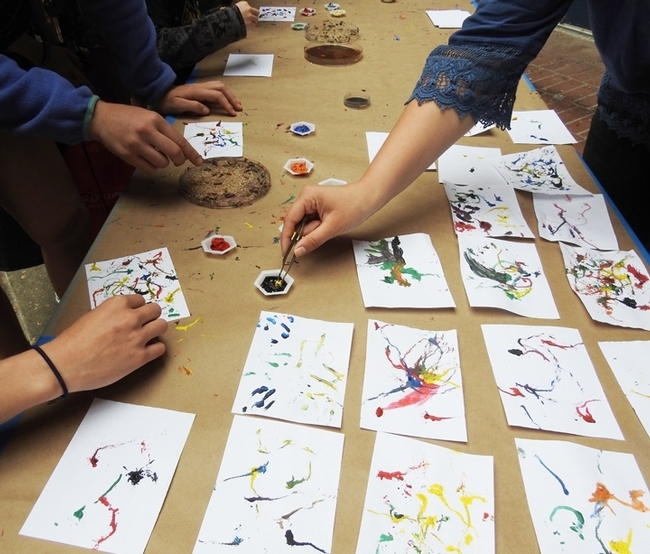
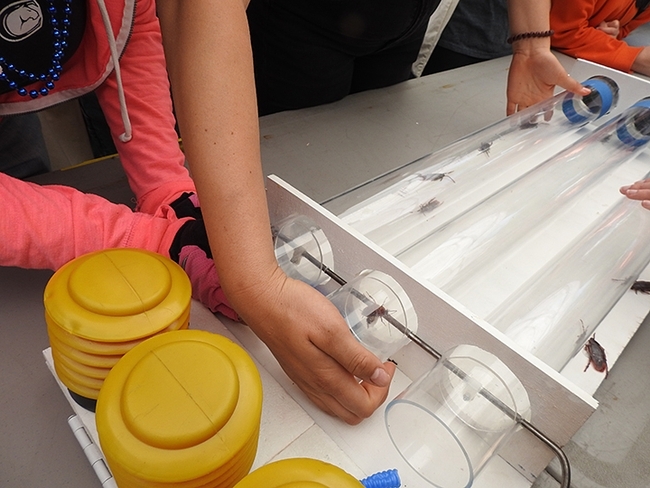
- Author: Kathy Keatley Garvey
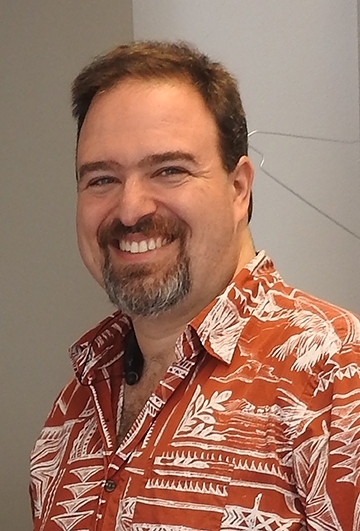
He's been planning "Tule and Cattail: A Tale of the Marsh Economy and Its Role in Human Health and Wellbeing” for a year. Sponsored by ENT and the Pacific Southwest Center of Excellence in Vector-Borne Diseases, it's free and family friendly. You can register at https://qr.codes/xYbeAK.
What a great day to spend a Sunday afternoon--and on St. Patrick's Day, too.
Attardo, both a talented scientist and photographer, has been capturing lots of images in the wetland area in Cache Creek conservatory which is adjacent to the Tending and Gathering Garden. "The wetland area is flooded by runoff from the Gordon Slough and is a habitat to plants and animals native to Northern California," says Attardo, chair of the UC Davis Designated Emphasis in the Biology of Vector-Borne Diseases. "The islands in the wetland are populated with tule which is a hardstem bulrush. Tules provide shelter to an array of wildlife. Red-winged blackbirds commonly build their nests in tule stalks. Reptiles and amphibians also live among them. Dragonflies frequently use tule stalks for eclosion and as perches. Fish also use the submerged stalks and root systems as nurseries."
"The tule acts as a water filter by sequestering excess nutrients from the water in collaboration with symbiotic microbes," he commented. "The tule also stabilizes the banks and slows waterflow. The tule is also utilized by native peoples for a variety of purposes including making sleeping mats, baskets, cordage, external and internal walls for homes, canoes. It also functioned as a food source."
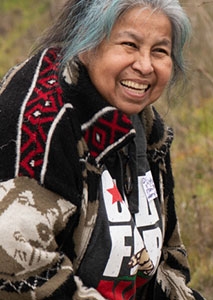
Basically, it's a collaborative outreach project "to integrate indigenous ecological knowledge and Western science to provide educational outreach opportunities."
The aim: "to advance the land management aims of local tribal communities and provide a platform to educate about the importance of maintaining wetland biology for climate change, ecological and human health, and vector control," Attardo says.
Here's what's on the agenda (note that the symposium will start promptly at 1 p.m. Snacks and drinks will be provided.)
Agenda
1 to 2:30 p.m.: Presentation by Diana Almendariz: "Cultural History and Traditional Ecological Management of Wetlands" Exploring the deep connection between indigenous history and wetland ecosystems.
2:30 to 2:35 p.m.: Break
2:35 p.m. to 3:15 p.m.: Presentation by Geoff Attardo: "Wetland Biology and its Importance for Ecological and Human Health" Discussing wetland biology's significance in climate change, ecology, and vector-borne disease.
3:15 p.m. – 3:20 p.m.: Break
3:20 p.m.– 3:50 p.m.: Tule Weaving Demonstration: Participants will learn traditional Tule weaving techniques, connecting with the material culture of wetland management.
3:50 p.m. – 4 p.m. Break
4 p.m. - 5 p.m. Question and Answer Session: Attendees can engage with the speakers and delve deeper into the topics discussed.
(For more information, contact Geoffrey Attardo at gmattardo@ucdavis.edu)

